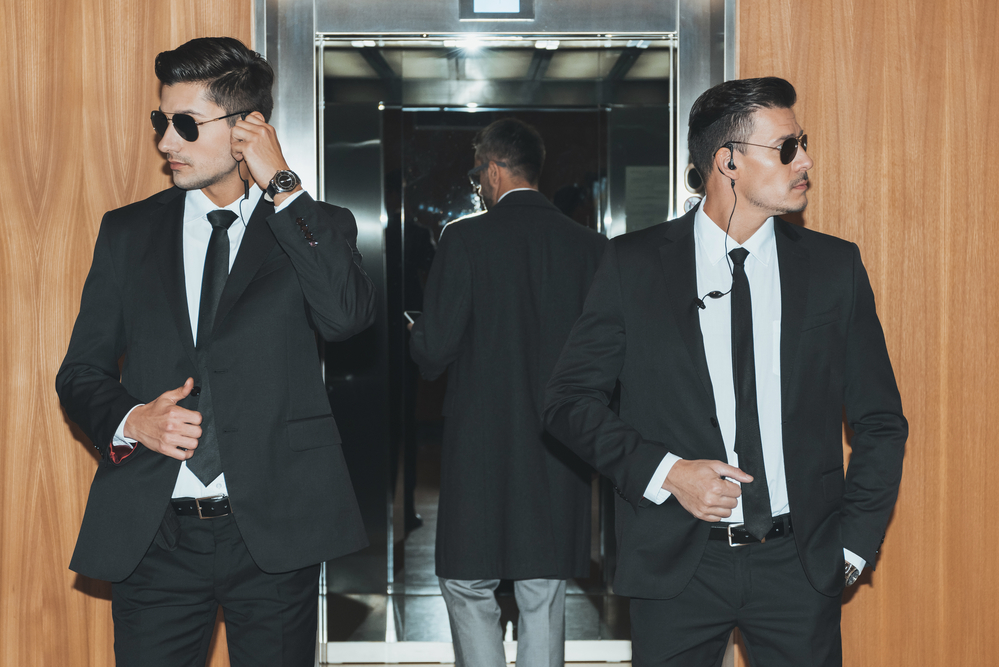Security guards are a fantastic security option, no matter what they are wearing, but the decision between hiring uniformed officers and the discretion of a plain clothed guard is still extremely important if you wish to maximise the protection on your site.

The Unmistakable Presence: Uniformed Guards
Uniformed security guards are the very embodiment of visibility in the security landscape. Their presence is designed to be conspicuous, serving as a clear signal to both the general public and potential adversaries.
The psychological impact of such visibility is profound; it acts as a robust deterrent, conveying to would-be perpetrators that the premises are under vigilant watch.
The benefits of uniformed security staff extend beyond their deterrent effect. They also instill a sense of safety and order among employees, customers, and visitors, bolstering confidence in the security measures in place.
In emergency situations, the sight of a uniformed officer stands as a pillar of authority and reassurance, guiding and assisting those in need.
However, the conspicuousness of uniformed security can sometimes be a double-edged sword. In scenarios where discretion is paramount or where the aim is to blend in with the environment, the overt nature of uniformed guards might not be ideal.
This is where plain-clothed security personnel step into the frame, offering a subtler approach to security.
The Art of Discretion: Plain-Clothed Guards
Plain-clothed security guards offer a more inconspicuous layer of protection. Operating under the radar, they blend seamlessly with the general populace, making them particularly effective in environments where a visible security presence could be intrusive or counterproductive.
Their ability to go unnoticed allows them to closely monitor situations without alerting potential wrongdoers that they are under surveillance.
This stealth approach is invaluable in settings such as retail environments, where plain-clothed guards can identify and address shoplifting or other discreet criminal activities without drawing undue attention.
It also proves beneficial in high-profile events or venues where the presence of uniformed personnel might detract from the ambiance or make guests feel uneasy.
Yet, the subtlety of plain-clothed security comes with its own set of challenges. Without the visible authority of a uniform, these guards may not be as readily identifiable to the public in times of crisis.
This necessitates a well-thought-out communication strategy to ensure they can effectively intervene and be recognized as security personnel when necessary.
Striking the Right Balance
The choice between uniformed and plain-clothed security guards is not a binary one; rather, it reflects a spectrum of strategic considerations.
The optimal approach often involves a blend of both, tailored to the specific needs and nuances of the environment in question.
Factors such as the nature of the threats, the profile of the premises, and the expectations of those within it all play a crucial role in determining the most effective security composition.
Whether through the visible authority of uniformed personnel or the discreet vigilance of plain-clothed officers, the ultimate goal remains the same: to provide a safe and secure environment for all.